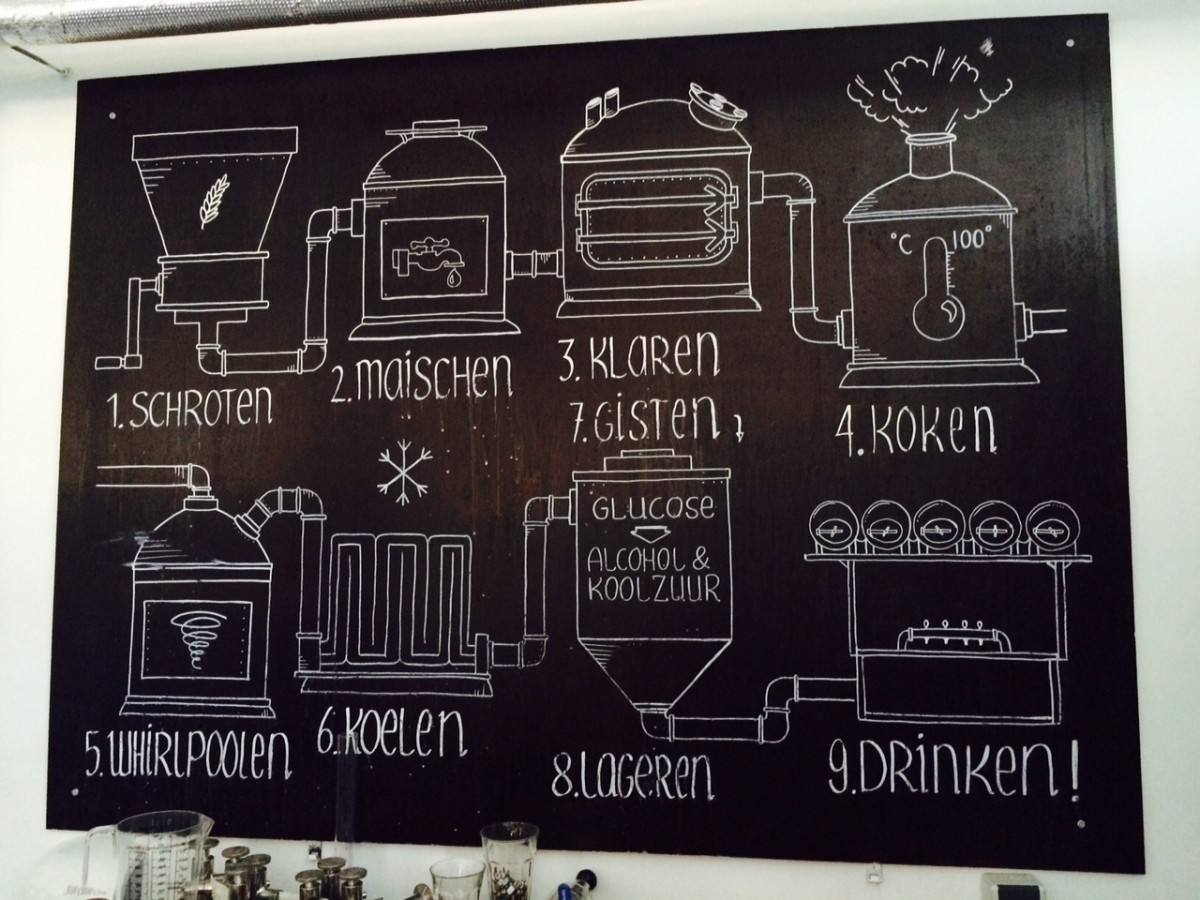
People drinking beers for centuries and nowadays, brewing has become a true art. Making beer is one thing, making good beer comprises more. At Brouwerij Troost, we often receive questions about the brewing process. Curious as well? Read more!
Beer consists mainly of malt, hops, water and yeast. Different brewers use different recipes and some even add a selection of herbs to their beers.
Malt is grain which has been shortly heated to start the germination process. As soon as the enzymes converted most of the starch into fermentable sugars, the temperature is increased. This results in a coated kernel full of fermentable sugars.
Hop is a small flower which is added to the beer to gain bitterness and aroma. Besides, hop supports the shelf life of beer, making hop an essential ingredient in the brewing process.
The water we use during the brewing process is simply Amsterdam’s tap water, very clean and of high quality.
Finally, beer needs yeast. Yeast is a small organism that converts sugar into alcohol, carbon dioxide and some other substances contributing to the aroma and color of the beer. Thus without yeast, beer would just be bitter sugar water without any fizz.
Because the sugar in a malt kernel is naturally protected by the coating, the malt needs to be milled or crushed to break apart the kernel. This happens in a gentle way, so that the coats remain intact. Later in the process, these coats can be used for the lautering.
As soon as all the malt is milled, the kernels are mixed with water and slowly heated. During this mashing, the starch in the malt is broken down to fermentable sugars by enzymes. These fermentable sugars can be used by the yeast later in the brewing process. The remaining liquid after this process is called wort and can be seen as the basis for the beer.
Because the wort still remains grains, it is not yet fully suitable for the boiling and fermentation. During the lautering, the grains and other solids are separated from the wort. This process takes in part place on a metal filter, but also by the coats of the grains. These coats serve as a natural filter and retain all the solids that slip through the filter.

The clear wort is now ready to be boiled. The boil usually lasts around 90 minutes. By boiling the wort this long, the bitter aromas of the hop can be added and the water will be sterilized. Adding hop at the beginning of the boiling process will result in a characteristic bitter, adding hop at the end of the boiling process results in flowery hop aromas, typical for I.P.A.’s.
After the boil the hops remain in the beer, just like some other solids you rather don’t want to have in your barrel or bottle. To get rid of these particles, the beer is pumped into a round tank with a high velocity. All solid particles are pushed to the centre by the arising centripetal force. This results in a centered pyramid of the last solid particles of the beer which can be easily removed.
After the whirpool, the beer has a temperature of 80 Celsius. Yeast would die immediately if it is added at these high temperatures. While the beer is pumped to the tanks, it is cooled down to temperatures the yeast like.
Most yeasts are best working at room temperatures. In addition, yeast don’t like pressure and to keep the yeast from choking, they need oxygen (they look a bit like humans, don’t they?). Yeast converts sugar into alcohol and carbon dioxide en needs a couple of weeks for this process. We keep an eye on the pressure and the temperature and let the yeasts do their job.
At Brouwerij Troost, most beers are top-fermented (ales). This means that we let the yeast float on top of the wort, where it can do its job. On top of the wort, the temperatures are higher, there is more oxygen and the pressure is low. Another way of fermentation is bottom-fermentation. With bottom-fermentation you lower the temperature which makes the yeast sink to the bottom. Because of the pressure and the oxygen-low surroundings, the yeast needs more time to convert all sugars and leaves fewer flavors.
After one day of brewing and four weeks of fermentation, the beer is finally ready to be consumed. Cheers!